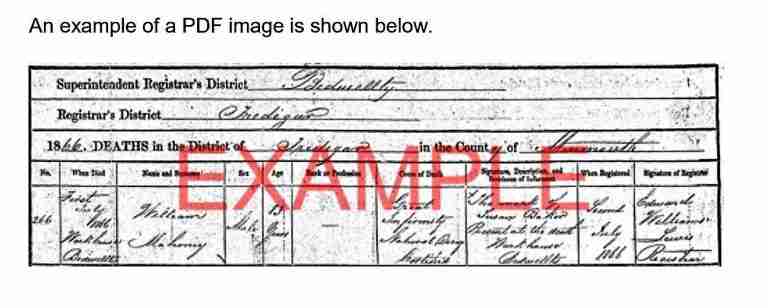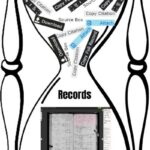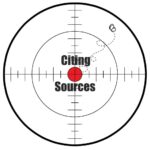The other day, my cousin, “James”, messaged me that Ancestry canceled his order for the birth record he ordered about 6 weeks ago. The reason “No record found”. I thought this was odd as he was using the information from the indexed record. I got on the case immediately.
Just like James, at some point, you’re going to find that an indexed record just doesn’t have all the information you’ll need so you’ll want to order the original document. In this case, James wanted the full name of the mother and the actual birth date, but he was having trouble obtaining it. Let me walk you through what you need to know when it’s your turn.
In the example below, I am using the indexed record that you would see on Ancestry for England’s birth records, and I am using the made-up name of John Reed. The index record has the name, the registration quarter, the registration district, the county, the mother’s maiden name, the volume and the page number.
Name: John Reed
Registration Date:
Jan 1917
[Feb 1917]
[Mar 1917]
Registration Quarter:
Jan-Feb-Mar
Registration District: Samford
Inferred County: Suffolk
Mother’s Maiden Name: Reed
Volume Number: 3a
Page Number: 1517
Underneath the index record will be where the index came from with the source citation, source information, original data, copyright, and description.
It will look like this:
Source Citation
General Register Office; United Kingdom; Reference: Volume 3a, Page 1517
Source Information
Ancestry.com. England & Wales, Civil Registration Birth Index, 1916-2007 [database on-line]. Provo, UT, USA: Ancestry.com Operations Inc, 2008.
Original data: General Register Office. England and Wales Civil Registration Indexes. London, England: General Register Office.
© Crown copyright. Published by permission of the Controller of HMSO and the Office for National Statistics. You must not copy on, transfer, or reproduce records without the prior permission of ONS. Indexes created by the General Register Office, in London, England.
Description
This database is a searchable, digitized version of the indices of civil registrations in England and Wales, reported quarterly to the General Register Office (GRO) in London. This index spans the years between 1916 and 2007.You need the information found in an original index to request a copy of a birth certificate for the individual referenced.
This index and citation gives you all the information for ordering this particular record. Typically, you can order the record from Ancestry, but with a little extra sleuthing, you can often get it faster and pay less by ordering directly from the source.
In this example, the citation is from General Register Office (GRO). Doing a google search for General Register Oiffice or GRO, we find their ordering website.
https://www.gro.gov.uk/gro/content/
Then, we had a few more options for ordering his index.
- He could order the full record from Ancestry, but this record will cost $39.99 for a paper certificate.
- From the citation we learned we could order it from the General Register Office (GRO) for the same paper certificate except it was cheaper than Ancestry and would cost 11 pounds which is about $16 with the current exchange rate. If mailed to the United States, it could take longer to receive.
- An alternative method from General Register Office (GRO) would be to order the PDF version for 7 pounds or about $10 with the current exchange rate. With this method, he would receive an email to go view and download his PDF in about 4 days verses weeks to receive the paper copy.
Whichever method chosen, the final record received will end up looking something like this.
Once in GRO, all he would need to do is make sure it matched the information that he originally saw on Ancestry or any other ancestry websites and then start the process of placing his order.
In this case, the PDF from GRO would have been my choice as it was the least expensive and fastest way to receive the record in question. And if it was not the correct record, I would have only been out about $10 verses about $40 with Ancestry.
Again, only you can determine your comfort level when ordering documents. In his case, James preferred to stick to ordering through Ancestry.
Whichever method is chosen though, it is important to always double check and make sure all the correct information is inputted so there will be no issues in receiving the desired documents.
That was what caused the problem James was facing.
According to the citation under the description we had everything we needed to place the order. If we had everything we needed in the index though, then what went wrong with James’ order?
I went back to the Ancestry record online and asked James to send me a copy of his confirmation email. When he sent it to me, I knew right away what was wrong.
In the above index, the birth was registered January, February, or March, which is the first quarter. James only needed to input the quarter to order the record. For some reason he thought they were asking for the last month in the quarter, and so he said “3”.
Upon my explaining his error, he went ahead and re-ordered the record with the correct quarter of “1”, and will be receiving a paper copy in about six weeks.
When you do this yourself, it is important that you take the time to consider where you want to order the record from and how to receive it, as well as make sure you are entering in the appropriate information.
Now, we can’t wait until the record comes, so we can hopefully solve James’ mystery.



